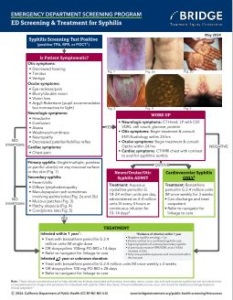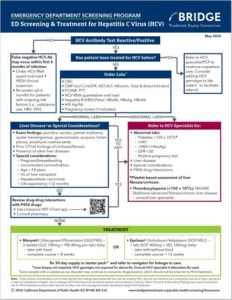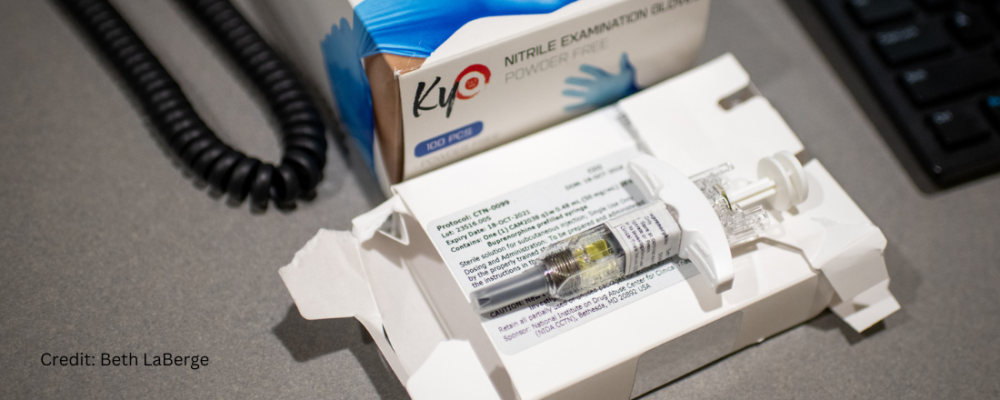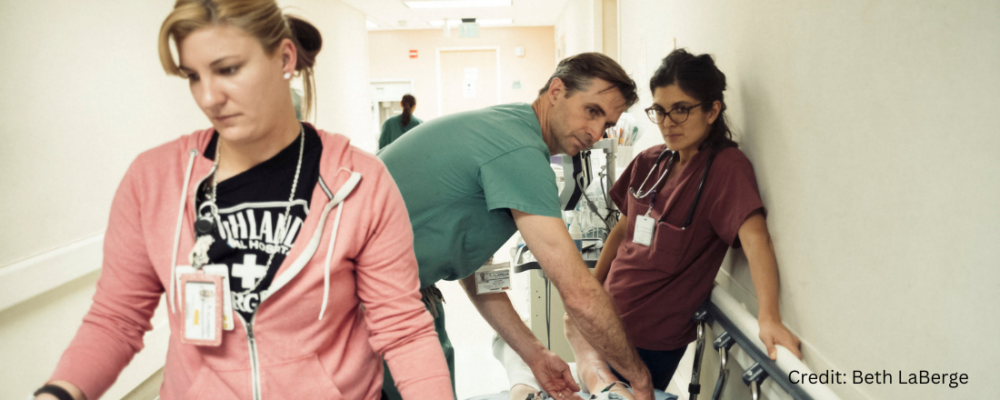
Clinical Guides: ED Screening and Treatment Protocols for Syphilis, HIV and Hepatitis C
-
Focus Areas
Communicable Disease Prevention, Health Care & Population Health -
Issues
Reproductive & Sexual Health -
Programs
Bridge

Emergency departments (EDs) are uniquely positioned to identify people with undiagnosed syphilis, HIV and hepatitis C virus (HCV) infections—helping to identify and treat those who might otherwise remain undiagnosed and reduce care barriers. PHI’s Bridge, in partnership with the California Department of Public Health (CDPH), is expanding routine opt-out testing for syphilis, HIV and HCV through the Emergency Department Syphilis/HIV/HCV Screening Program (EDSP).
Below, explore Bridge’s clinical screening and treatment protocols for syphilis, HIV and HCV, designed to give emergency department medical providers easy-to-follow guidelines to provide patient education, begin treatment, and utilize navigators to link patients to follow-up care:
ED Symptom Screen for Opportunistic Infections Prior to Antiretroviral Therapy (ART) for HIV
May 2024
 These clinical considerations and special tests are to help diagnose key opportunistic infections for which ART should be temporarily held. They are not meant to be a comprehensive workup for individuals with these symptoms and other common infections and illnesses (such as pneumonia and bacterial meningitis) which can cause similar symptoms but would not prevent the initiation of ART. See the protocols.
These clinical considerations and special tests are to help diagnose key opportunistic infections for which ART should be temporarily held. They are not meant to be a comprehensive workup for individuals with these symptoms and other common infections and illnesses (such as pneumonia and bacterial meningitis) which can cause similar symptoms but would not prevent the initiation of ART. See the protocols.
ED Screening & Treatment for Syphilis
May 2024
 These clinical considerations are to help identify key findings associated with primary, secondary, neuro, ocular, otic and cardiovascular syphilis but are not meant to be a comprehensive list of signs and symptoms for individuals with syphilis. Other less classic clinical manifestations may occur and should be treated accordingly based on clinical judgment. See the guide.
These clinical considerations are to help identify key findings associated with primary, secondary, neuro, ocular, otic and cardiovascular syphilis but are not meant to be a comprehensive list of signs and symptoms for individuals with syphilis. Other less classic clinical manifestations may occur and should be treated accordingly based on clinical judgment. See the guide.
ED Screening & Treatment for Hepatitis C Virus (HCV)
May 2024
 These clinical considerations are to help identify key findings associated with low risks for treating HCV, but are not meant to be a comprehensive list of signs, symptoms or labs for individuals at higher risk to undergo HCV treatment and should not replace clinical decision making. Other clinical and laboratory findings may impact someone’s risk for HCV treatment, and providers should use their own clinical judgment when deciding to begin HCV treatment. See the protocols.
These clinical considerations are to help identify key findings associated with low risks for treating HCV, but are not meant to be a comprehensive list of signs, symptoms or labs for individuals at higher risk to undergo HCV treatment and should not replace clinical decision making. Other clinical and laboratory findings may impact someone’s risk for HCV treatment, and providers should use their own clinical judgment when deciding to begin HCV treatment. See the protocols.
These resources have been developed by an interdisciplinary team based on published evidence and expert opinion. However, they should never be used as a substitute for clinical judgment. Providers are responsible for assessing the unique circumstances and needs of each case. Adherence to these guidelines will not ensure successful treatment in every situation.
Work With Us
You change the world. We do the rest. Explore fiscal sponsorship at PHI.
Support Us
Together, we can accelerate our response to public health’s most critical issues.
Find Employment
Begin your career at the Public Health Institute.


